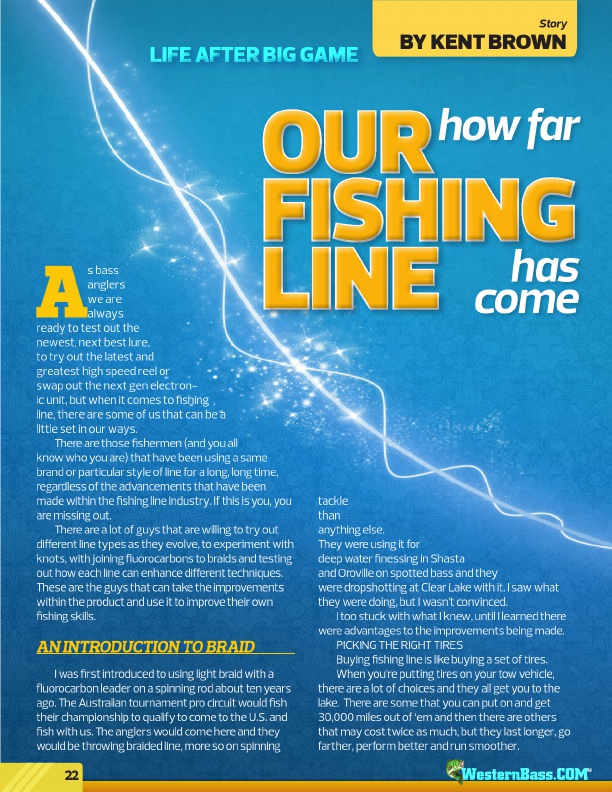
LI FE AFTE R B I G GA ME
FL O II USNR H E ING
Story
BY KENT BROWN
how far
A
s bass
anglers
we are
always ready to test out the
newest, next best lure,
to try out the latest and
greatest high speed reel or
swap out the next gen electron-
ic unit, but when it comes to fishing
line, there are some of us that can be a
little set in our ways.
There are those fishermen (and you all
know who you are) that have been using a same
brand or particular style of line for a long, long time,
regardless of the advancements that have been
made within the fishing line industry. If this is you, you
are missing out.
There are a lot of guys that are willing to try out
different line types as they evolve, to experiment with
knots, with joining fluorocarbons to braids and testing
out how each line can enhance different techniques.
These are the guys that can take the improvements
within the product and use it to improve their own
fishing skills.
AN INTRODUCTION TO BRAID
I was first introduced to using light braid with a fluorocarbon leader on a spinning rod about ten years ago. The Australian tournament pro circuit would fish their championship to qualify to come to the U.S. and fish with us. The anglers would come here and they would be throwing braided line, more so on spinning
cohmaes
tackle than anything else. They were using it for deep water finessing in Shasta and Oroville on spotted bass and they were dropshotting at Clear Lake with it. I saw what they were doing, but I wasn’t convinced.
I too stuck with what I knew, until I learned there were advantages to the improvements being made.
PICKING THE RIGHT TIRES
Buying fishing line is like buying a set of tires.
When you’re putting tires on your tow vehicle, there are a lot of choices and they all get you to the lake. There are some that you can put on and get 30,000 miles out of ‘em and then there are others that may cost twice as much, but they last longer, go farther, perform better and run smoother.
22 ®